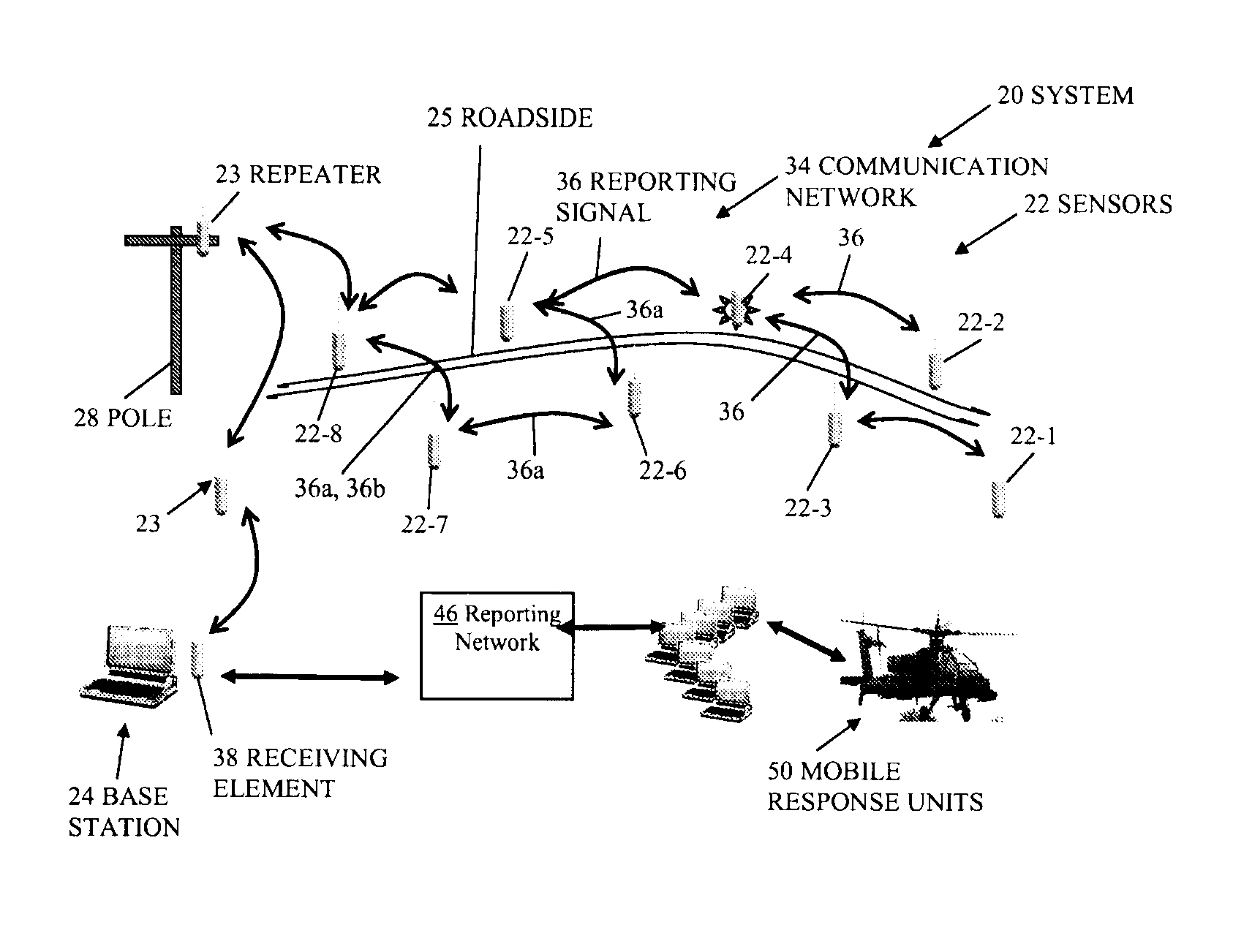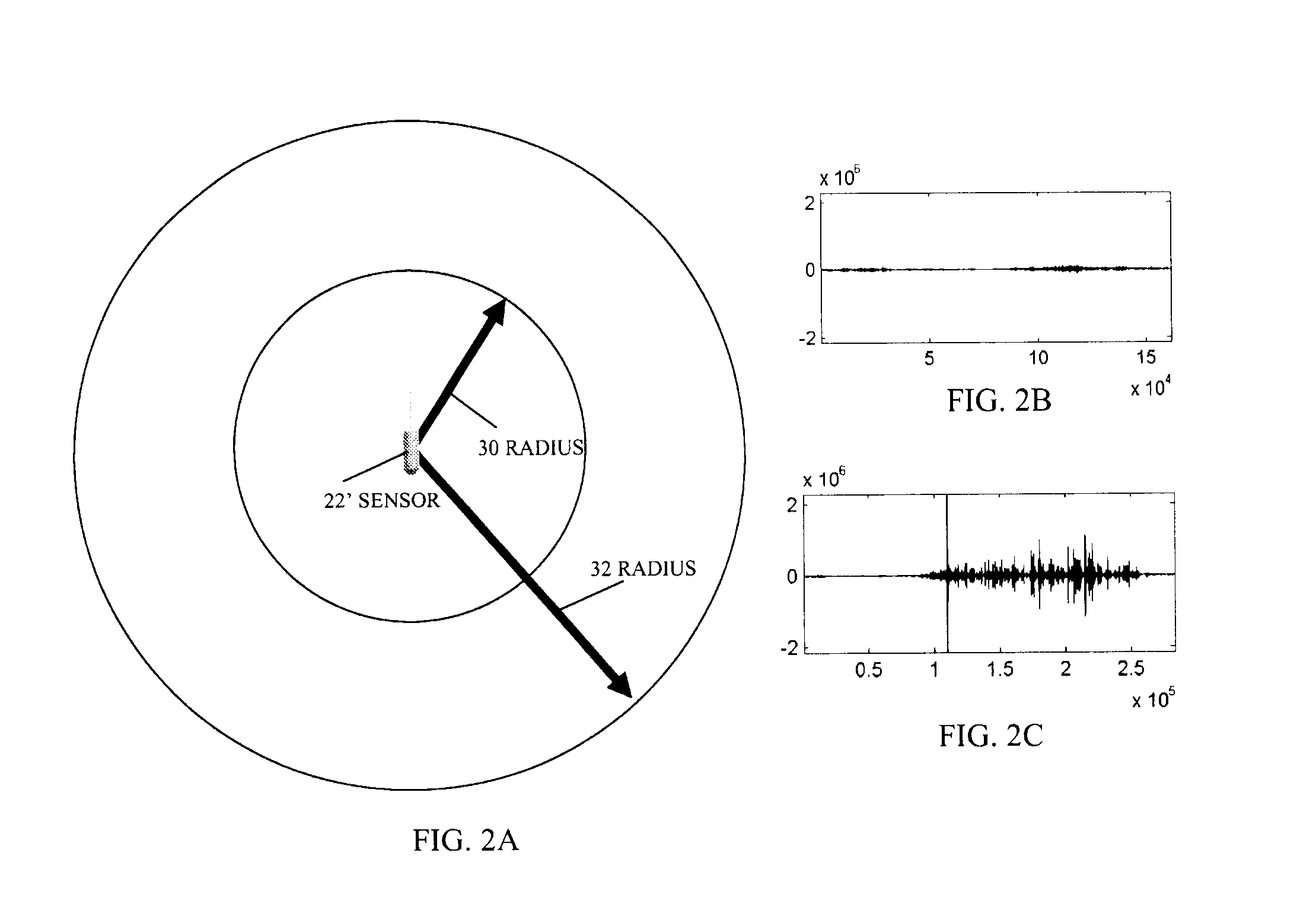System and method for detecting emplacement of improvised explosive devices
- Summary
- Abstract
- Description
- Claims
- Application Information
AI Technical Summary
Benefits of technology
Problems solved by technology
Method used
Image
Examples
Embodiment Construction
[0024]Embodiments of the invention are directed to techniques for detecting placement of an explosive device, such as an IED or landmine, within a particular geographic area. A detection system includes sensors and base station that detect and report on suspected IED emplacement activity within the area. When disposed within a geographic area, each sensor forms part of a wireless communications network which allows communication among neighboring sensors. As a sensor detects activity in its proximity, such as activity that indicates emplacement of an IED, the sensor transmits a reporting signal through the network to the base station. The neighboring sensors receive and transmit the reporting signal in a sequential manner toward the base station. Because the reporting signal takes multiple hops toward the base station, the sensors do not require large amounts of power to transmit the signal. Furthermore, the detection system allows detection of IED emplacement within the geographic ...
PUM
 Login to View More
Login to View More Abstract
Description
Claims
Application Information
 Login to View More
Login to View More - R&D
- Intellectual Property
- Life Sciences
- Materials
- Tech Scout
- Unparalleled Data Quality
- Higher Quality Content
- 60% Fewer Hallucinations
Browse by: Latest US Patents, China's latest patents, Technical Efficacy Thesaurus, Application Domain, Technology Topic, Popular Technical Reports.
© 2025 PatSnap. All rights reserved.Legal|Privacy policy|Modern Slavery Act Transparency Statement|Sitemap|About US| Contact US: help@patsnap.com



